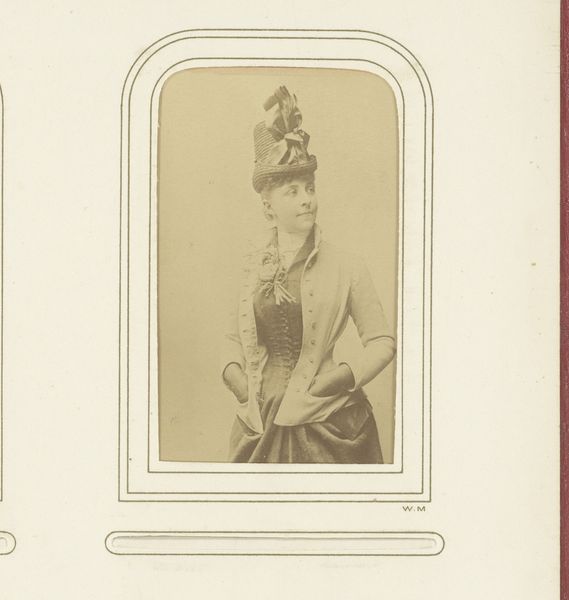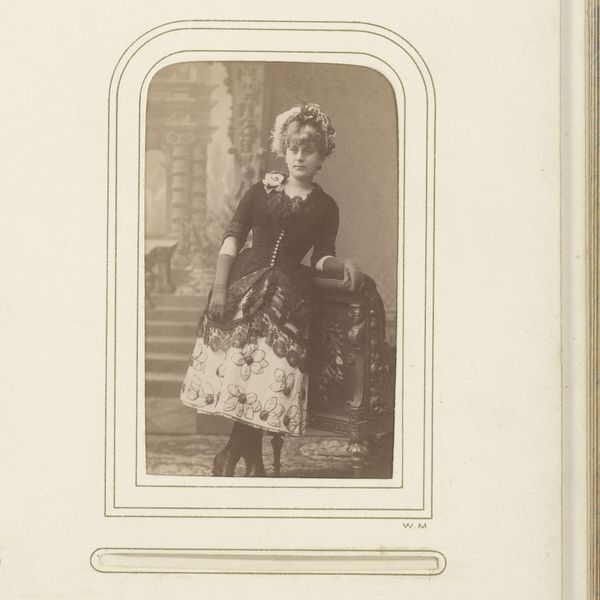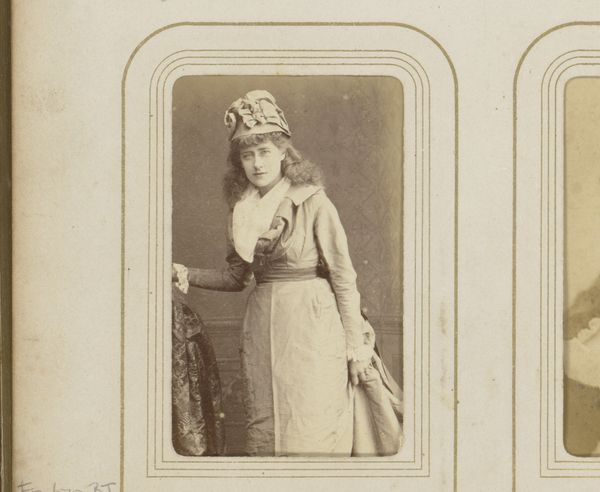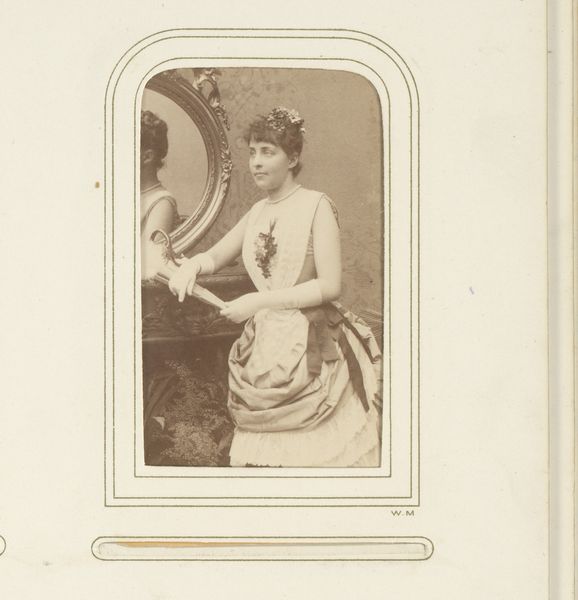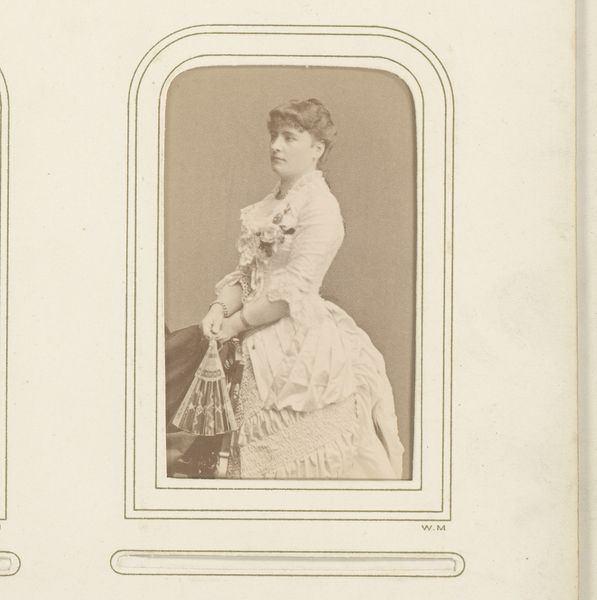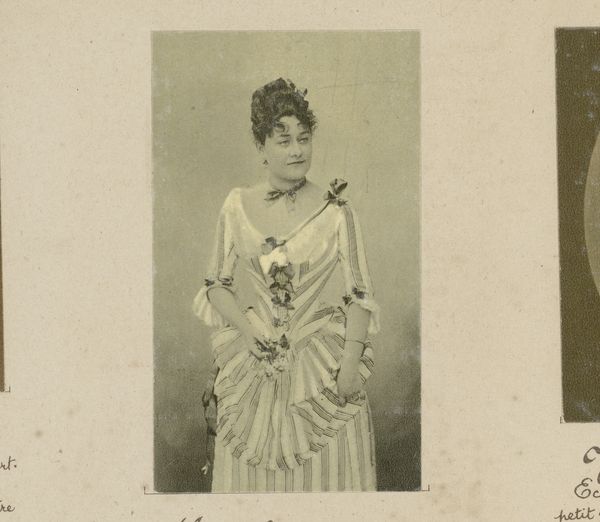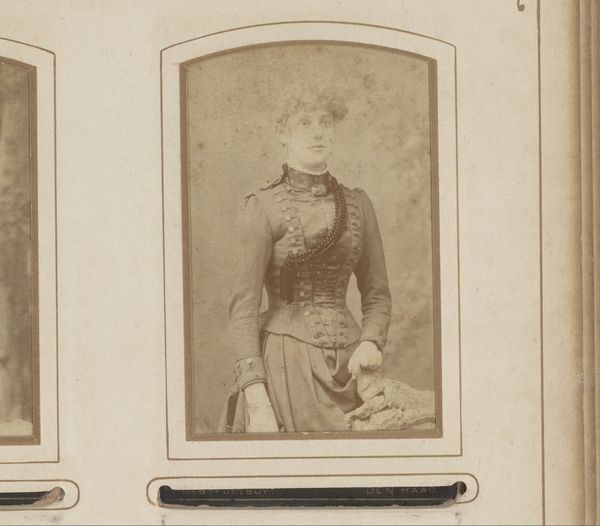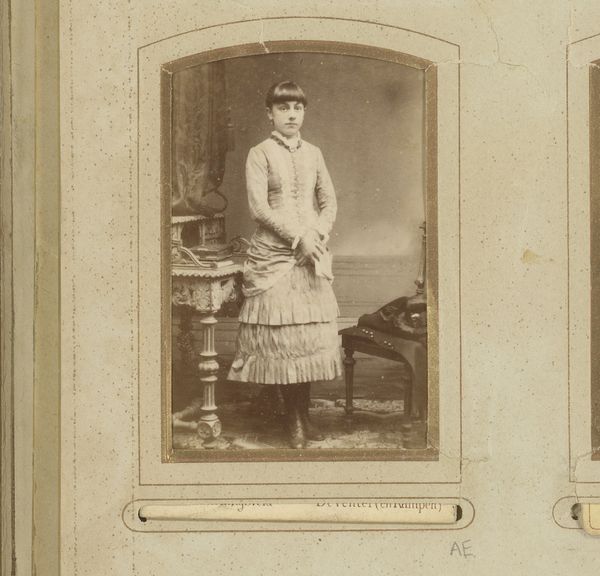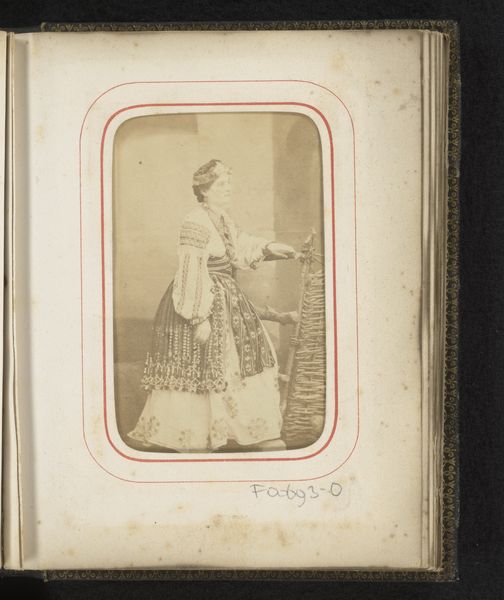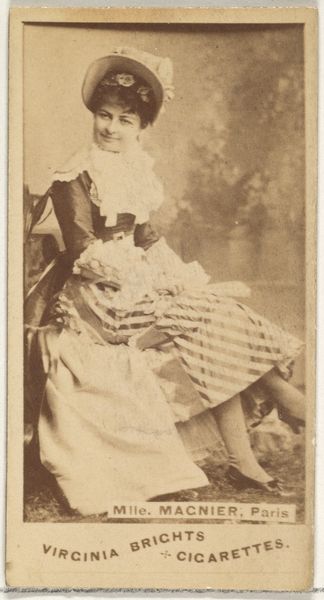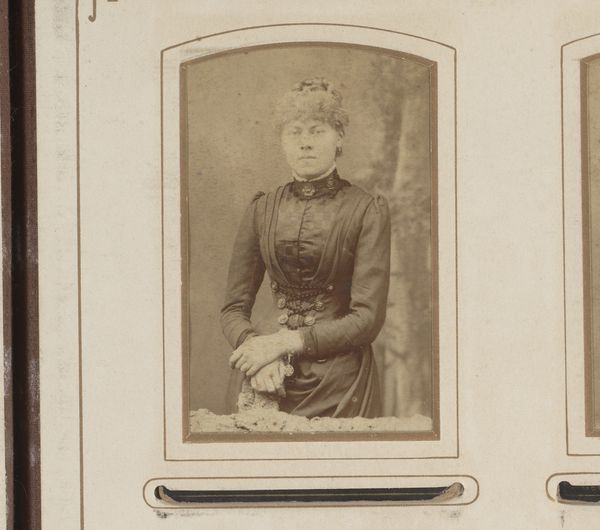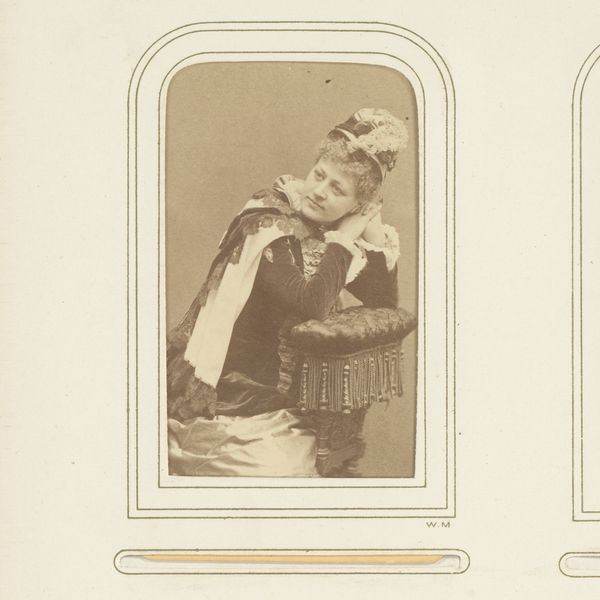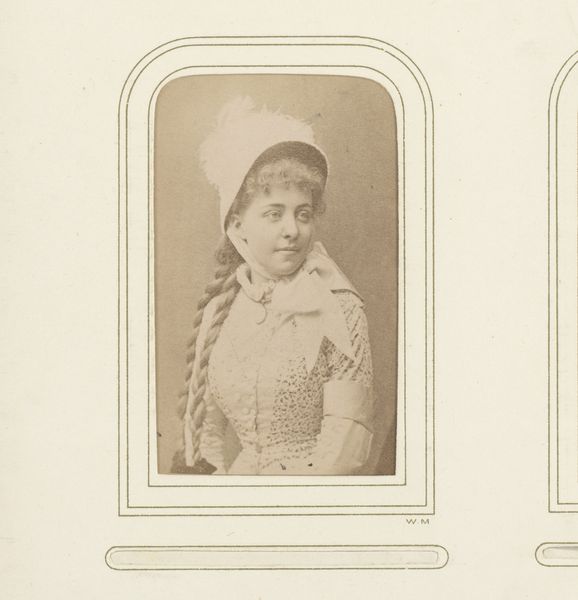
photography
#
portrait
#
photography
#
genre-painting
Dimensions: height 85 mm, width 51 mm
Copyright: Rijks Museum: Open Domain
Editor: Here we have "Portret van Gerda Grönberg-Rove in kostuum," a photograph by Gustaf Alfred Johanson Dahllöf, sometime between 1880 and 1890. She's dressed in costume, and there's even a rooster next to her! What strikes me most is how posed and formal it feels, yet there's also something playful about the entire composition. How do you interpret this work? Curator: This portrait offers us a glimpse into the performance of identity and the constructed nature of representation during the late 19th century. The "costume" becomes a critical focal point. Was this specific attire connected to any cultural group or identity, and if so, what might that convey? The fact that this person is 'in costume' highlights the constructed nature of identity and representation. Who was Gerda Grönberg-Rove? Editor: I wish I knew. It feels like a theatre or stage persona. Curator: Exactly. Consider how photography, as a relatively new medium then, played a role in shaping and disseminating cultural narratives. The rooster might also signify a constructed "authenticity," something rural or traditionally domestic. Consider also the relationship between the sitter, likely an affluent woman, and the performance of working-class or rural identity. How does it sit within the social and power structures? Editor: So you're saying it's not just a portrait of someone in a costume, but also a comment on the role-playing inherent in constructing identity. And photography, here, immortalizes the performance. I never considered the rooster could mean so much more. Curator: Precisely! This artwork encourages us to consider how gender, class, and cultural identity are presented and consumed, then and now.
Comments
No comments
Be the first to comment and join the conversation on the ultimate creative platform.
